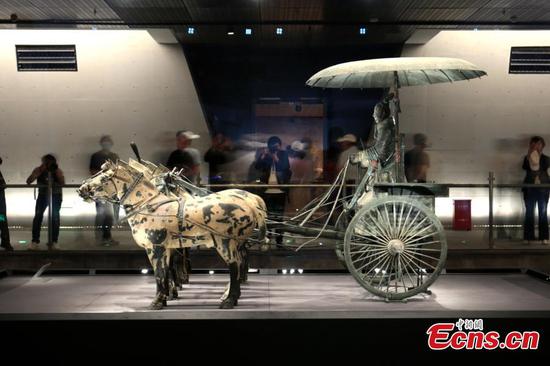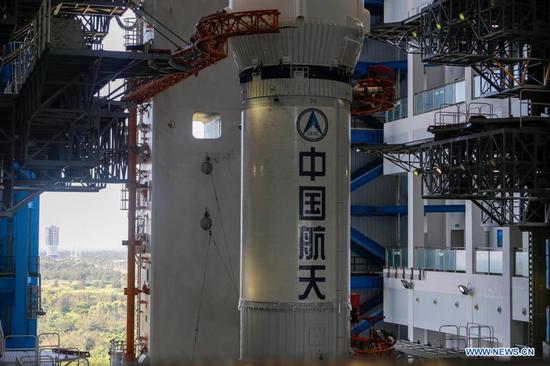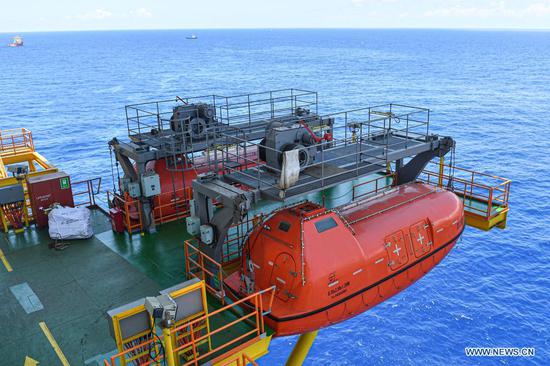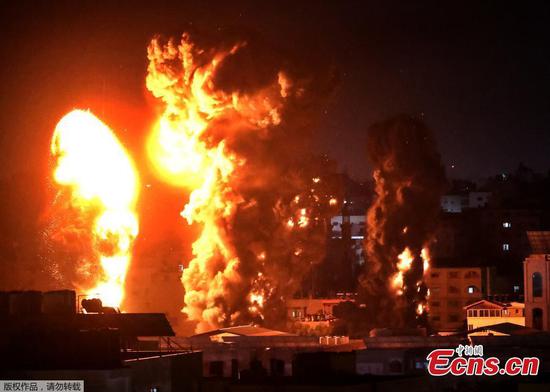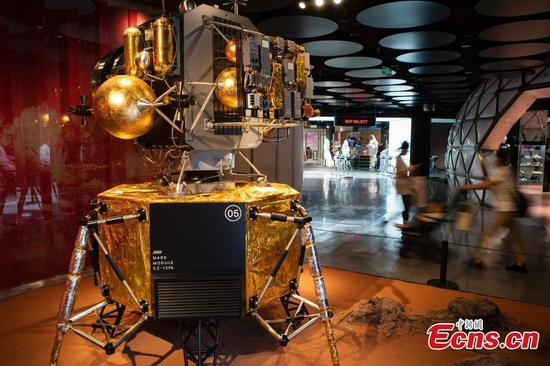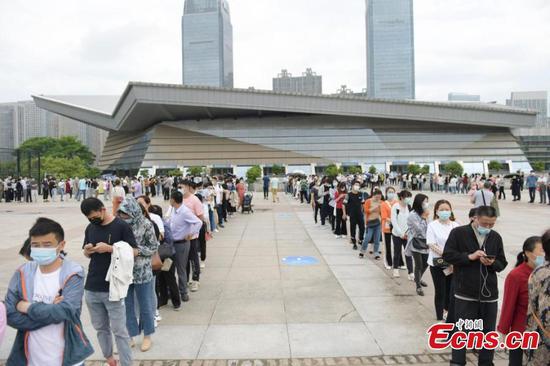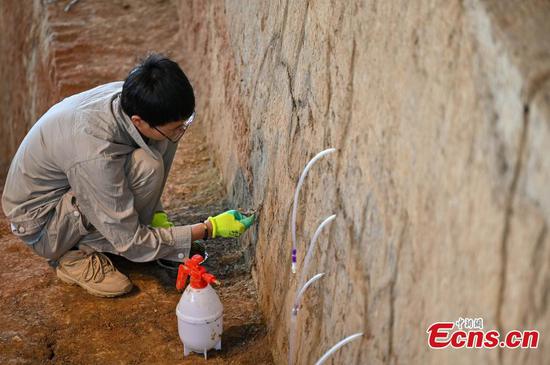
Economic and trade ties under BRI framework will receive further boost
A new freight train service launched on Tuesday links Liuzhou city in South China's Guangxi-Zhuang autonomous region and Russia's capital Moscow.
It is set to further boost the already strong economic and trade cooperation between China and Russia, experts and industry people said.
The first train on this route departed from Liuzhou on Tuesday for Moscow, carrying 57 loaders and four motor graders made by Liugong Machinery Co Ltd, a Liuzhou-headquartered machinery manufacturer.
The train is scheduled to arrive in Moscow within 20 days after traveling about 11,000 kilometers, slashing the transport time by more than two weeks compared with ocean shipping, according to Luo Guobing, vice-president of Liugong Machinery.
The train service will eventually enhance connectivity and logistics between China and Central and Eastern European Countries or CEECs as well, they said.
This will shore up high-quality economic and trade cooperation based on the Belt and Road Initiative, and facilitate world economic recovery from the impact of the COVID-19 pandemic.
This is the first China-Europe freight train route whose point of origin is located in the Guangxi Zhuang autonomous region.
The route will operate once or twice a month. For the first time, the transportation used for this route adopts the "one-stop" cross-border mode without train re-marshalling, saving transportation costs for enterprises both in terms of capital and time, according to China Railway Nanning Group.
Huo Jianguo, vice-chairman of the Beijing-based China Society for World Trade Organization Studies, said the new route offers enterprises a better option to diversify their logistics solutions, especially at a time when the COVID-19 pandemic has been disrupting international logistics, causing capacity restrictions and surging prices. So, the route is expected to help boost world economic recovery.
"International trade has been severely impacted by the pandemic, and transportation disruptions caused by the coronavirus have also been curbing normal industrial activities in various regions while the increase in transportation costs adds burdens to enterprises," he said.
"Since exports and imports between China and other BRI-related economies are on the rise, the new route, expected to ease bottlenecks in transportation capacity under the current circumstances, will definitely boost China's trade and economic cooperation with related economies, to inject new impetus into the global economic recovery," he said.
Data from China's Ministry of Commerce have showed impressive growth in China's trade with Russia and the CEECs.
China-Russia trade has so far exceeded $40 billion this year. It reached $40.21 billion in the first four months of this year, which is the first time in history, and is expected to set a full-year record.
The January-April figure is 21 percent higher than that of the same period in 2019, the last pre-pandemic level, and has doubled from the same period of 2016.
Moreover, the annual bilateral trade volume between China and Russia has exceeded $100 billion for three successive years, and China has been Russia's largest trade partner for 11 years in a row now.
China's trade with the CEECs reached $30.13 billion during the first quarter, surging 50.2 percent from a year ago, which was also 11 percentage points higher than China's overall year-on-year foreign trade growth rate.
Since 2012, the average annual growth rate of China-CEECs trade has reached 8 percent, three times the growth rate for the country's overall foreign trade and two times that of the CEECs.
Li Dongchun, director of the overseas business unit of Liugong Machinery, said improvement in connectivity between China and the BRI economies, including the new train route, has provided better support to the company's overseas operations.
"Since 2016, the company has been enjoying soaring product demand from overseas markets, thanks to the BRI-related growth in Chinese companies' overseas projects as well as the increase in local appetite for infrastructure improvement," he said.
"However, due to limited logistics solutions, which mainly rely on costly and time-consuming ocean shipping and road traffic, the costs of shipping our products to Russia and the CEECs, as well as Central Asia, were relatively high."
He said better connectivity now brings more logistics options, which are expected to boost high-quality economic and trade cooperation between China and the related economies, underpinning recovery in related industrial and supply chains and the global economy.
The new route will see at least one to two journeys a month, which is good news given that ocean shipping costs have been fluctuating since the outbreak of the COVID-19 pandemic but always remaining much higher than railway freight. Most importantly, ocean shipments are not as predictable and reliable as those done via freight trains.










